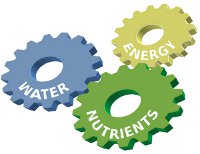| Questions | Learning objectives | Download |
Module 3.1.
Exposure and effects in humans |
How are infectious diseases transmitted?
What happens when people are exposed to pathogens? |
To become familiar with the most important pathogens found in water and
sanitation systems, with the symptoms they cause and with their effect on
individuals and populations. |
ppt -
pdf - |
Module 3.2.
Environmental transmission of pathogens |
Where do the pathogens to come from? How do pathogens in excreta contaminate the environment? |
To become familiar with environmental transmission routes for pathogens, especially in relation to
water and sanitation. |
ppt -
pdf - |
Module 3.3.
Pathogen reduction |
How persistent are pathogens in the environment? How can we prevent exposure and
disease transmission in sanitation systems? |
To become familiar with the behaviour of pathogens in the environment and the
effects of treatment and strategies for minimizing the transmission of disease,
esp. in relation to agricultural use of excreta. |
ppt -
pdf - |
Module 3.4.
Health targets |
Which targets can be achieved in relation to exposure and treatment?
How are barriers used in guidelines to minimise health risks? |
To become familiar with faecal indicators and the risk concept, and to
understand their application in guidelines for reuse of excreta and greywater. |
ppt -
pdf - |
Module 3.5.
Risk management |
Can we measure a risk of disease transmission? How can sanitation systems be evaluated? |
To be aware of how the potential health impacts of sanitation systems can be evaluated
and compared regarding their potential health impact. |
ppt -
pdf - |
Total Chapter 3 download:
ppt - -- pdf - |







